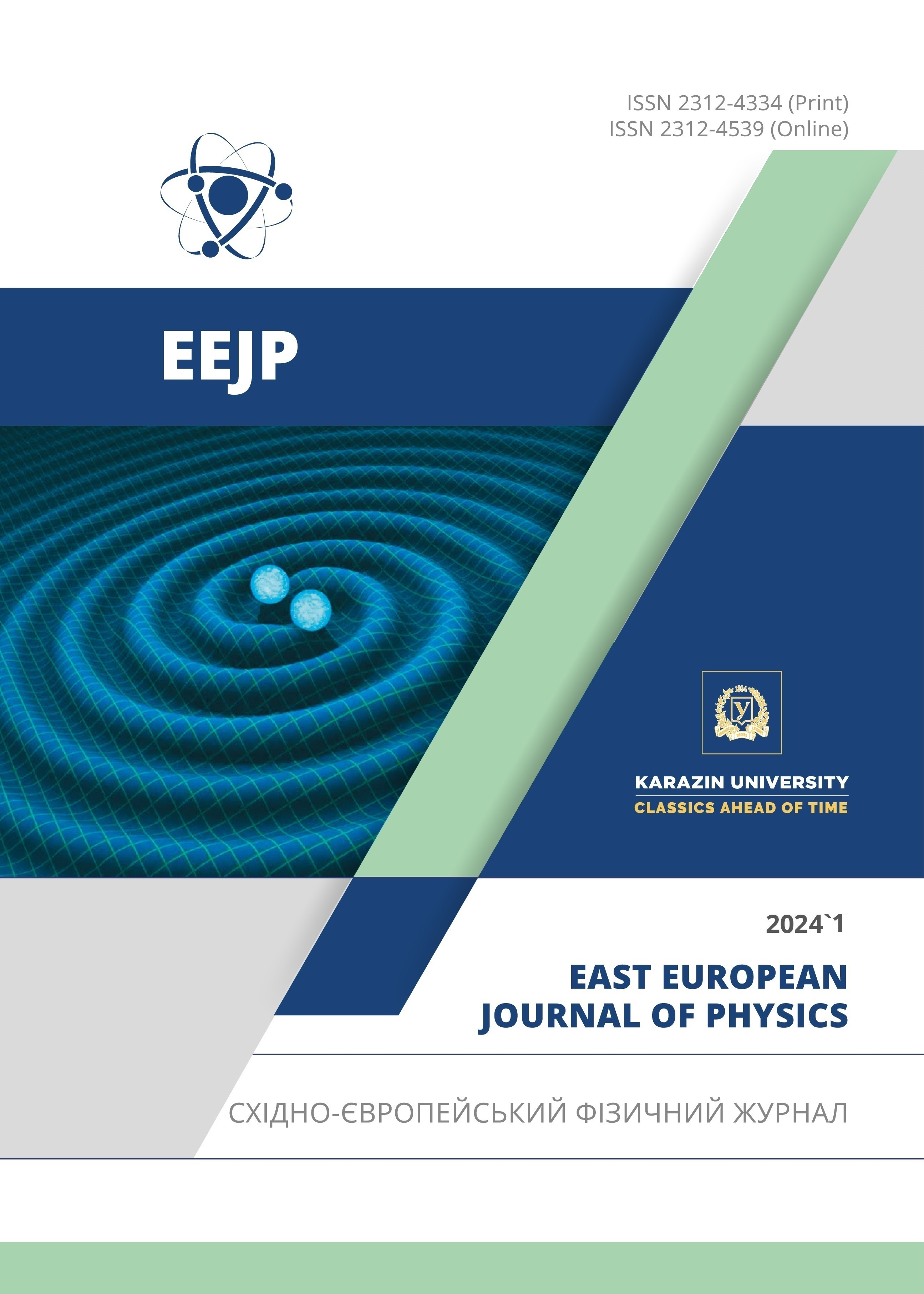Developments of Nanoporous AAO Based Capacitive-Type Sensors for Heavy Metal Ion (Arsenic) Sensing Application
Abstract
In this work the evolution of a capacitive type sensor based on nanoporous anodic aluminum oxide (AAO) fabricated by a two-step anodization process using a low-cost customized setup designed in-house is reported. The parallel plate capacitors were fabricated using aluminum (Al) as base electrode and gold as top electrode, where the porous AAO was used as the dielectric material. This demonstrated the clear dependence of the capacitance values of the as prepared different sensors on the dielectric material’s thickness. The as developed sensors were tested for the detection of arsenic (As) ions.An increase in the capacitance was observed while increasing the concentration of the As ion in aqueous solutions. The presence of As ion was confirmed through EDS (Energy dispersive X-ray spectroscopy) mapping carried out in a FESEM. This change in capacitance can be attributed to the change in dielectric constant of the active material with the incorporation of metal ions.
Downloads
References
M.A. Kashi, and A. Ramazani, “The effect of Temperature and Concentration on the Self-Organized Pore Formation in Anodic Alumina,” J. Phys. D: Appl. Phys. 38, 2396 (2005).https://doi.org/10.1088/0022-3727/38/14/015
H. Masuda, F. Matsumoto, and, K. Nishio, “Fabrication of Functional Devices Based on Highly Ordered Anodic Porous Alumina,” Electrochemistry, 72, 389 (2004).https://doi.org/10.5796/electrochemistry.72.389
M. Iwai, T. Kikuchi, andR.O. Suzuki, “Self-Ordered Nanospike Porous Alumina Fabricated under a New Regime by an Anodizing Process in Alkaline Media,” Sci. Rep.11, 7240 (2021).https://doi.org/10.1038/s41598-021-86696-z
T. Islam, A.T. Nimal, U. Mittal,and M.U. Sharma, “A Micro Interdigitated Thin Film Metal Oxide Capacitive Sensor for Measuring Moisture in the Range of 175-625 Ppm,” Sens. Actuators B Chem. 221, 357 (2015).https://doi.org/10.1016/j.snb.2015.06.101
J.O. Carneiro, A. Ribeiro, F. Miranda, I.R. Segundo, S. Landi, V. Teixeira, and M.F.M. Costa, “Development of Capacitive-Type Sensors by Electrochemical Anodization: Humidity and Touch Sensing Applications,” Sensors,21, 7317 (2021).https://doi.org/10.3390/s21217317
M.A. Kashi, A. Ramazani, H. Abbasian,and A. Khayyatian, “Capacitive Humidity Sensors Based on Large Diameter Porous Alumina Prepared by High Current Anodization,” Sens. Actuators A, Phys. 174, 69 (2012).https://doi.org/10.1016/j.sna.2011.11.033
C.K. Chung, C.A. Ku, andZ.E. Wu, “A High-and- Rapid- Response Capacitive Humidity Sensor of Nanoporous Anodic Alumina by One- step Anodizing Commercial 1050 Aluminum Alloy and Its Enhancement Mechanism,” Sens. Actuators B, Chem. 343, 130156 (2021).https://doi.org/10.1016/j.snb.2021.130156
M.A. Mir, M.A. Shah, and P.A. Ganai, “Nanoporous Anodic Alumina (NAA) Prepared in Different Electrolytes with Different Pore Sizes for Humidity Sensing,” J. Solid State Electrochem. 24, 1679 (2020).https://doi.org/10.1007/s10008-020-04683-2
S.W. Chen, O.K. Khor, M.W. Liao, andC.K. Chung, “Sensitivity Evolution and Enhancement Mechanism of Porous Anodic Aluminum Oxide Humidity Sensor Using Magnetic Field,” Sens. Actuators B, Chem. 199, 384 (2014).https://doi.org/10.1016/j.snb.2014.03.057
C.K. Chung, O.K. Khor, C.J. Syu, andS.W. Chen, “Effect of Oxalic acid Concentration on the Magnetically Enhanced Capacitance and Resistance of AAO Humidity Sensor,” Sens. Actuators B, Chem. 210, 69 (2015).https://doi.org/10.1016/j.snb.2014.12.096
J. Wu, M. Cao, D. Tong, Z. Finkelstein, andE.M.V. Hoek, “Acritical review of point-of-use drinking water treatment in the United States,” Npj Clean Water.4, 40 (2021).https://doi.org/10.1038/s41545-021-00128-z
L. Weerasundara, Y.-S. Ok, andJ. Bundschuh, “Selective removal of arsenic in water: A critical review,” Environ. Pollut. 268, 115668 (2021).https://doi.org/10.1016/j.envpol.2020.115668
Md. G. Uddin, S. Nash, andA.I. Olbert, “A review of water quality index models and their use for assessing surface water quality,” Ecol.Indicat. 122, 107218 (2021).https://doi.org/10.1016/j.ecolind.2020.107218
L. Zheng, Z. Zhou, M. Rao, and Z. Sun, “Assessment of heavy metals and arsenic pollution in surface sediments from rivers around a uranium mining area in East China,” Environ Geochem Health,42, 1401 (2020).https://doi.org/10.1007/s10653-019-00428-x
H. Ahmad, A.R.A. Abdulwahab, B.H. Koo, and R.A. Khan, “Selective Extraction of Trace Arsenite Ions Using a Highly Porous Aluminum Oxide Membrane with Ordered Nanopores,” ACS Omega,7, 3044 (2022).https://doi.org/10.1021/acsomega.1c06133
A.P. Li, F. Müller, A. Birner, K. Nielsch, andU. Gösele, “Hexagonal Pore Arrays with a 50-420 nm Interpore Distance Formed by Self-Organization in Anodic Alumina,” J. Appl. Phys.84, 6023 (1998).https://doi.org/10.1063/1.368911
Copyright (c) 2024 Trishna Moni Das, Devabrata Sarmah, Sankar Moni Borah, Sunandan Baruah

This work is licensed under a Creative Commons Attribution 4.0 International License.
Authors who publish with this journal agree to the following terms:
- Authors retain copyright and grant the journal right of first publication with the work simultaneously licensed under a Creative Commons Attribution License that allows others to share the work with an acknowledgment of the work's authorship and initial publication in this journal.
- Authors are able to enter into separate, additional contractual arrangements for the non-exclusive distribution of the journal's published version of the work (e.g., post it to an institutional repository or publish it in a book), with an acknowledgment of its initial publication in this journal.
- Authors are permitted and encouraged to post their work online (e.g., in institutional repositories or on their website) prior to and during the submission process, as it can lead to productive exchanges, as well as earlier and greater citation of published work (See The Effect of Open Access).








